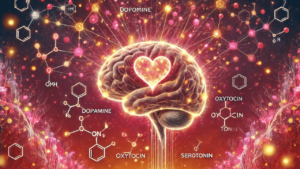Recent findings link the neurological signs of aura to the ensuing migraine, revealing how a spreading wave of disturbance and fluid flow in the brain causes migraines.

Migraines are a common yet debilitating condition, affecting approximately one in ten people worldwide. A significant portion of migraine sufferers, about 25%, experience an aura before the onset of the headache. This aura manifests as a sensory disturbance, with symptoms including light flashes, blind spots, double vision, and tingling sensations or limb numbness, typically appearing five to sixty minutes prior to the headache.
For the first time, groundbreaking research has explained the relationship between these neurological symptoms of aura and the subsequent migraine, offering new insights into potential treatments and prevention strategies.
Understanding Aura: The Prelude to Migraines
The aura associated with migraines is caused by a phenomenon known as cortical spreading depression (CSD). This temporary depolarization of neurons and other brain cells is triggered by the diffusion of glutamate and potassium, radiating across the brain like a wave. This wave reduces oxygen levels and impairs blood flow, primarily affecting the brain’s visual processing center, hence the visual disturbances that often indicate a migraine.
Brain Communication During Migraines
While the aura originates in the brain, the brain itself does not feel pain. Instead, pain signals are transmitted from the central nervous system (CNS), which includes the brain and spinal cord, to the peripheral nervous system (PNS), responsible for sending sensory information such as touch and pain. The precise communication process between the brain and these peripheral sensory nerves during migraines has long remained a mystery. However, recent research has shed light on this complex interaction.
The Role of the Glymphatic System
Pioneering work by researchers at the University of Rochester and the University of Copenhagen has significantly advanced our understanding of fluid dynamics in the brain. In 2012, the glymphatic system was first described, highlighting how cerebrospinal fluid (CSF) is used to wash away toxic proteins in the brain. This system plays a crucial role in transporting proteins, neurotransmitters, and other chemicals within the brain.
An Unexpected Source of Migraines
It was previously thought that headaches that followed an aura were caused by nerve endings on the outside of the membranes enclosing the brain. However, new research conducted on mice has identified a different route. As the depolarization wave spreads, neurons release a variety of inflammatory and other proteins into the CSF. These proteins are then transported to the trigeminal ganglion, a large bundle of nerves at the base of the skull that supplies sensory information to the head and face.
Breaking the Blood-Brain Barrier
Traditionally, it was assumed that the trigeminal ganglion resided outside the blood-brain barrier, which tightly controls what molecules enter and leave the brain. The most recent research, however, identified a previously unidentified opening in the barrier that permits CSF to enter the trigeminal ganglion directly. This exposes the sensory nerves to the cocktail of proteins released by the brain, potentially triggering the pain associated with migraines.
Identifying Key Proteins Involved
The researchers identified twelve proteins, known as ligands, that bind with receptors on sensory nerves in the trigeminal ganglion, potentially activating these cells. After a cortical spreading depression, the amounts of some of these proteins in CSF more than doubled. Notably, one of these proteins, calcitonin gene-related peptide (CGRP), is already the target of a new class of drugs designed to treat and prevent migraines, known as CGRP inhibitors. Other proteins that have been found to be important in migraine headaches are also linked to a number of different pain syndromes, including neuropathic pain.

New Targets for Migraine Treatment
The discovery of these proteins opens new avenues for migraine treatment. “We have identified a new signaling pathway and several molecules that activate sensory nerves in the peripheral nervous system. Among the identified molecules are those already associated with migraines, but we didn’t know exactly how and where the migraine-inducing action occurred,” said Martin Kaag Rasmussen, Ph.D., a postdoctoral fellow at the University of Copenhagen and the study’s first author.
Understanding the role of these newly identified ligand-receptor pairs may enable the development of new pharmacological targets, which could benefit the large portion of patients who do not respond to existing therapies.
Why Migraines Often Affect One Side of the Head
Interestingly, the researchers observed that the transport of proteins released from one side of the brain predominantly reaches the nerves in the trigeminal ganglion on the same side. This finding may explain why most migraines cause pain on one side of the head.
Details of the Study
The pivotal study, which has significantly advanced our understanding of migraines, was conducted by a team of researchers led by Maiken Nedergaard, MD, DMSc, co-director of the University of Rochester Center for Translational Neuromedicine. This groundbreaking research was published in the prestigious journal, Science.
The study involved a series of experiments conducted on mice to observe the interactions between the central nervous system and the peripheral nervous system during a migraine episode. The researchers focused on understanding the phenomenon of cortical spreading depression and how it leads to the release of proteins in the cerebrospinal fluid. These proteins were tracked to the trigeminal ganglion, where they interact with sensory nerves, potentially triggering migraine pain.
By using advanced fluid dynamics models, the researchers were able to map the flow of cerebrospinal fluid and identify a previously unknown gap in the blood-brain barrier, allowing proteins to directly affect the trigeminal ganglion. This discovery opens up new possibilities for targeted migraine treatments, aiming to block these specific proteins and prevent the activation of sensory nerves.
Common Migraine Symptoms
Migraines can present with a variety of symptoms, which can vary from person to person. Most common symptoms include:
- Throbbing or Pulsating Headache: Often localized to one side of the head.
- Sensitivity to Light and Sound: Known as photophobia and phonophobia, respectively.
- Nausea and Vomiting: These gastrointestinal symptoms frequently accompany migraines.
- Aura: Sensory disturbances such as light flashes, blind spots, double vision, and tingling sensations or limb numbness.
- Visual Disturbances: Temporary loss of vision, seeing zigzag patterns, or experiencing blurred vision.
- Dizziness: Feeling lightheaded or unsteady.
- Fatigue: Extreme tiredness or lack of energy.
Precautions to Manage and Prevent Migraines
Taking certain precautions can help manage and prevent migraines:
- Identify and Avoid Triggers: Common triggers include stress, certain foods (like chocolate, cheese, and alcohol), changes in sleep patterns, and hormonal changes. Keeping a migraine diary can help identify specific triggers.
- Maintain a Healthy Lifestyle: Regular exercise, a balanced diet, and adequate hydration can reduce the frequency and severity of migraines.
- Regular Sleep Schedule: Consistent sleep patterns can prevent migraines. Get seven to nine hours of sleep every night.
- Stress Management: Techniques such as yoga, meditation, and deep-breathing exercises can help manage stress.
- Medications: Over-the-counter pain relievers (like ibuprofen or aspirin) and prescription medications (such as triptans or CGRP inhibitors) can be effective in managing migraine symptoms. (Please consult a physician before opting for any medication)
- Avoid Excessive Caffeine: While small amounts can sometimes help relieve a migraine, excessive consumption can lead to withdrawal headaches.
- Stay Hydrated: Dehydration is a common trigger for migraines. Ensure you drink plenty of fluids throughout the day.
- Regular Medical Check-Ups: Regular visits to your healthcare provider can help manage migraines more effectively and ensure that any underlying conditions are treated.
Implications for Future Research and Treatment
This groundbreaking study provides a deeper understanding of the mechanisms underlying migraines and opens up new possibilities for targeted treatments. By identifying the proteins involved in activating sensory nerves during a migraine, researchers can now focus on developing drugs that specifically target these pathways. This could lead to more effective treatments with fewer side effects, offering hope to millions of migraine sufferers worldwide.
Conclusion
The new research on the relationship between aura and migraines marks a significant milestone in our understanding of this complex condition. By uncovering the role of brain fluid dynamics and identifying key proteins involved in the process, scientists have paved the way for the development of more effective migraine treatments.
As we continue to unravel the mysteries of migraines, there is hope that we will be able to provide better relief for those who suffer from this debilitating condition.
Read Next:

The Psychology of Love: Why Valentines Day Matters More Epic Than You Think
Discover the psychology of love and why Valentines Day is more important than you think. Learn how love impacts the brain, strengthens relationships, and boosts

Premier League Highlights: Arsenal Humiliate Man City 5-1, Spurs and Palace Secure Crucial Wins
Arsenal demolished Manchester City 5-1 in a statement premier league highlights win, reigniting their title hopes. Meanwhile, Crystal Palace stunned Man United 2-0, and Tottenham

How Budget 2025 Impacts the Indian Middle-Class: Major Tax Benefits and Glaring Omissions
Budget 2025 offers major tax relief to the middle class, including zero tax on incomes up to ₹12 lakh. However, it misses out on incentives

Degrees vs Employability: Why “Highly Qualified Degree Holders” Struggle to Find Jobs While “Less Qualified Individuals” Get Hired Faster!
Many highly qualified individuals struggle to secure jobs, while less qualified candidates get hired quickly. This Degrees vs Employability paradox is caused by employer preferences,

The Power of Mindset: Why Looking Poor Doesn’t Make You Poor, but Thinking Poor Does!
Discover why looking poor doesn’t define your wealth but thinking poor does. Learn the power of mindset and how a growth-oriented mindset can lead to

Overthinking: How It’s Damaging Today’s Youth – Causes and Cure in 2025
Understanding how overthinking is silently damaging today’s youth, from its causes rooted in societal pressure and social media to its long-term effects on mental health.
